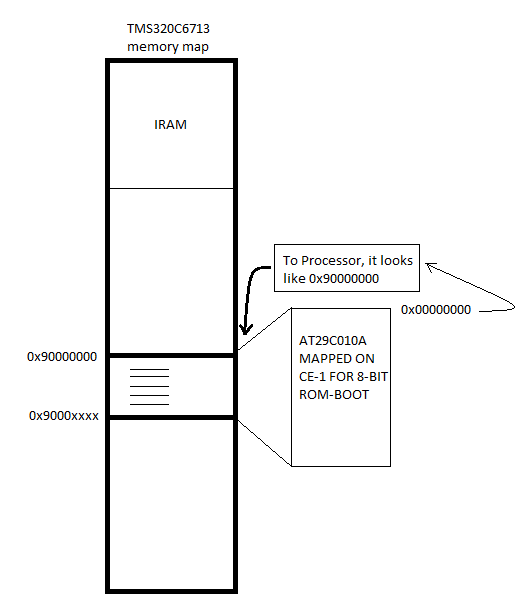Tool/software: Code Composer Studio
Hi,
I am working on an application built around tms320c6713 DSP Processor. My application scenario as as follow:
Boot mode: 8-bit ROM boot.
ROM attached: AT29C010A on CE-1 memory space.
Working Procedure:
On boot the primary bootlaoder (built-in in c6713) will copy 1k Byte from Memory space (CE-1-->above mentioned attached ROM) into IRAM (0x00000000). This copied memory will contain custom secondary bootloader. after the 1k memory copy operation, the remaining code/data will be copied into internal RAM (IRAM) by secondary bootloader. After this the transfer will be given to __c_init00 i.e. application starting point.
How Application is built:
Sections like .text, .cinit, .const, etc. have Load address in ROM (CE-1) and Run address in IRAM. Application is built with run-time autoinitialization in ccsv3.3. from .map file, the sections address start from CE-1 memory space as defined by linker script.
Whats the Problem:
In order to burn the code in AT29C010A, i have to convert .out file to .hex file format. Now the problem is, for ROM burner software, the address 0x90000000 (load addresses) doesn't exist in AT29C010A. It means I have to map load address to 0h (ROM start) which after attaching to C6713 processor CE-1 space, will look like address 0x90000000 to C6713. This scenario is shown bellow.
Now how can I map addresses from CE-1 (0x90000000) to 0x00000000 in hex conversion utility so that ROM burner can burn it to AT29C010A? I have already tried flag -zero in cmd file.
Kind Regards,


